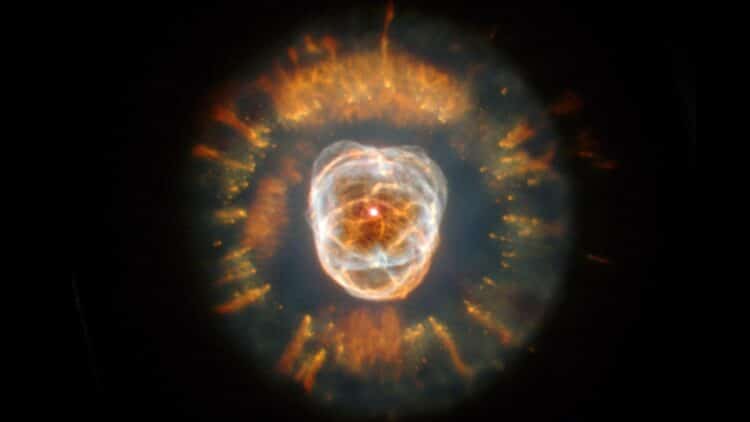For a long time, we believed we understood, at least in general terms, how the universe was distributed. We had the notion that stars, galaxies, planets, and interstellar gas, all together, would account for what we called “ordinary matter,” or baryonic matter. But there was a problem: the math simply didn’t add up. This was because the best calculations estimated that there was much more matter out there than we could see or detect with our instruments, missing matter.
They weighed the cosmos using a flash of radio light, and it worked
This turning point came with the arrival of an unusual tool: Fast Radio Bursts (FRBs). To understand, imagine radio flashes that streak across the universe like powerful flashlights, illuminating everything in their path. These flashes last milliseconds and come from billions of light-years away. At first, they seemed like astronomical phenomena like so many others. But something caught my attention: as they crossed space, their signals slowed down slightly, a clear clue that they were interacting with something invisible. And the denser the medium, the greater the delay.
From then on, scientists at Caltech and the Harvard-Smithsonian Center for Astrophysics began treating FRBs as cosmic probes. They used data from 69 well-localised FRBs (with known source galaxies and distances) and did the unthinkable: they measured the space between galaxies. One of the signals analyzed, for example, came from 9.1 billion light-years away, simply the most remote FRB ever recorded. All of this is thanks to networks like the Deep Synoptic Array-110 in the California desert and observatories spread across the planet.
The invisible majority: 76% of normal matter floats between galaxies
Until the story takes a new turn. Data analysis revealed that about 76% of the universe’s ordinary matter was there, drifting silently through the intergalactic medium. What we mean is that what we used to call missing matter wasn’t hidden inside stars or in the centers of galaxies, but floating as ionized gas between one galaxy and another.
This result didn’t come out of nowhere; in fact, it perfectly matches predictions made by advanced cosmological simulations, but until now, no one had been able to confirm it directly. It’s as if we were seeing only the shadow of matter (as one of the researchers put it), but now with enough clarity to understand what it hides. And the numbers are impressive:
- 76% of baryonic matter is in the intergalactic medium (IGM).
- 15% is concentrated in halos of hot gas surrounding galaxies.
- And only a small fraction is within the galaxies themselves, forming stars, planets, or cold gas.
It’s worth remembering that when we talk about “ordinary matter,” we’re referring to matter made of protons, neutrons, and electrons, which is quite different from dark matter or dark energy (which accounts for 85% of the universe).
Cosmic threads, missing mass, and the quest for a new physics
Being able to trace how this matter is distributed throughout the universe, we can also better understand how galaxies form, how light travels billions of light-years, and how extreme events like supernova explosions and black holes influence the surrounding environment. This discovery also paves the way for even bigger questions.
Will this new precision finally allow us to understand the mass of neutrinos, those nearly invisible particles that pass through us all the time, but which may hold clues to new physics beyond what we know? And perhaps most exciting of all, this is just the tip of the iceberg. The new DSA-2000 project, under construction in the United States, is expected to detect up to 10,000 FRBs per year, enabling detailed mapping of the “cosmic web.” Imagine FRBs alongside James Webb, who just discovered more than 800,000 galaxies in the darkness.


